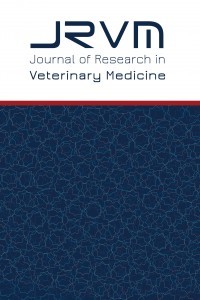Comparison of Egg Quality Characteristics of Different Quail Lines
This study was carried out to investigate external and internal egg quality traits of different quail lines housed in a multitier cage system. The study was performed on eggs of three different lines of quail as wild type, recessive white and black cross-line stock raised for commercial production. All flocks in the experiment were housed in same environmental conditions for quail and fed same diets during the experiment. A total of 60 eggs from each quail lines were used to determine internal and external egg quality traits. Quail eggs were examined for both internal and external quality characteristics. The eggs from cross-line black coloured quails had significantly greater weight (P<0.01) and it needs more force to crack significantly than the other eggs to break (P<0.012). The black line of quails had significantly greater egg shell thickness than the other line quails (P<0.001). The white line quail eggs had significantly lowest egg length and highest shape index values (P<0.001, P<0.001). The egg yolk of white lines had a significantly lighter yellow than wild and black lines (P<0.003). In conclusion, it seems that the eggs of black coloured lines were relatively superior to wild and white coloured quail groups.
Keywords:
Quail, egg quaity, genotype,
___
- Nasr MAF, Mohammed H, Hassan RA et al. Does light intensity affect the behavior, welfare, performance, meat quality, amino acid profile, and egg quality of Japanese quails? Poult Sci. 2019; 98: 3093-3102. https://doi.org/10.3382/ps/pez089
- Lan LTT, Nhan NTH, Hung LT et al. Relationship between plumage color and eggshell patterns with egg production and egg quality traits of Japanese quails, Vet World, 2021; 14: 897-902.
- François D, Akana A, Radu-Rusu R et al. Effect of the Quail Phenotype and Breeding Age on Egg Laying and Characteristics. Open J Anim Sci. 2021; 11:208-221. doi: 10.4236/ojas.2021.112016.
- Başlangıç: 1981
- Yayıncı: Bursa Uludağ Üniversitesi
